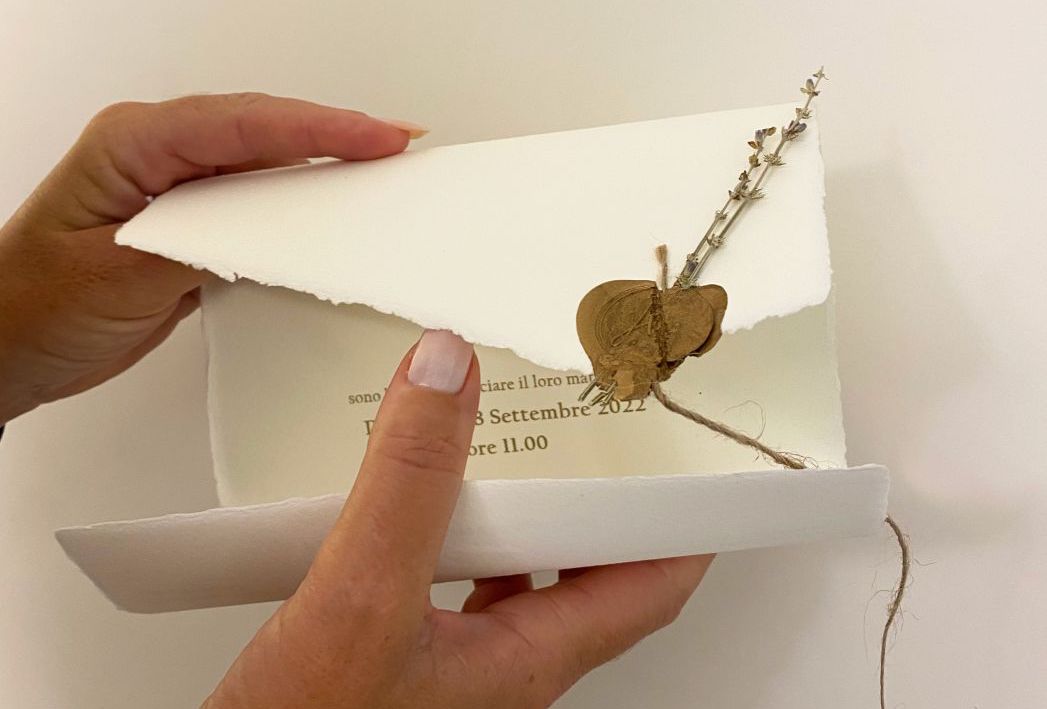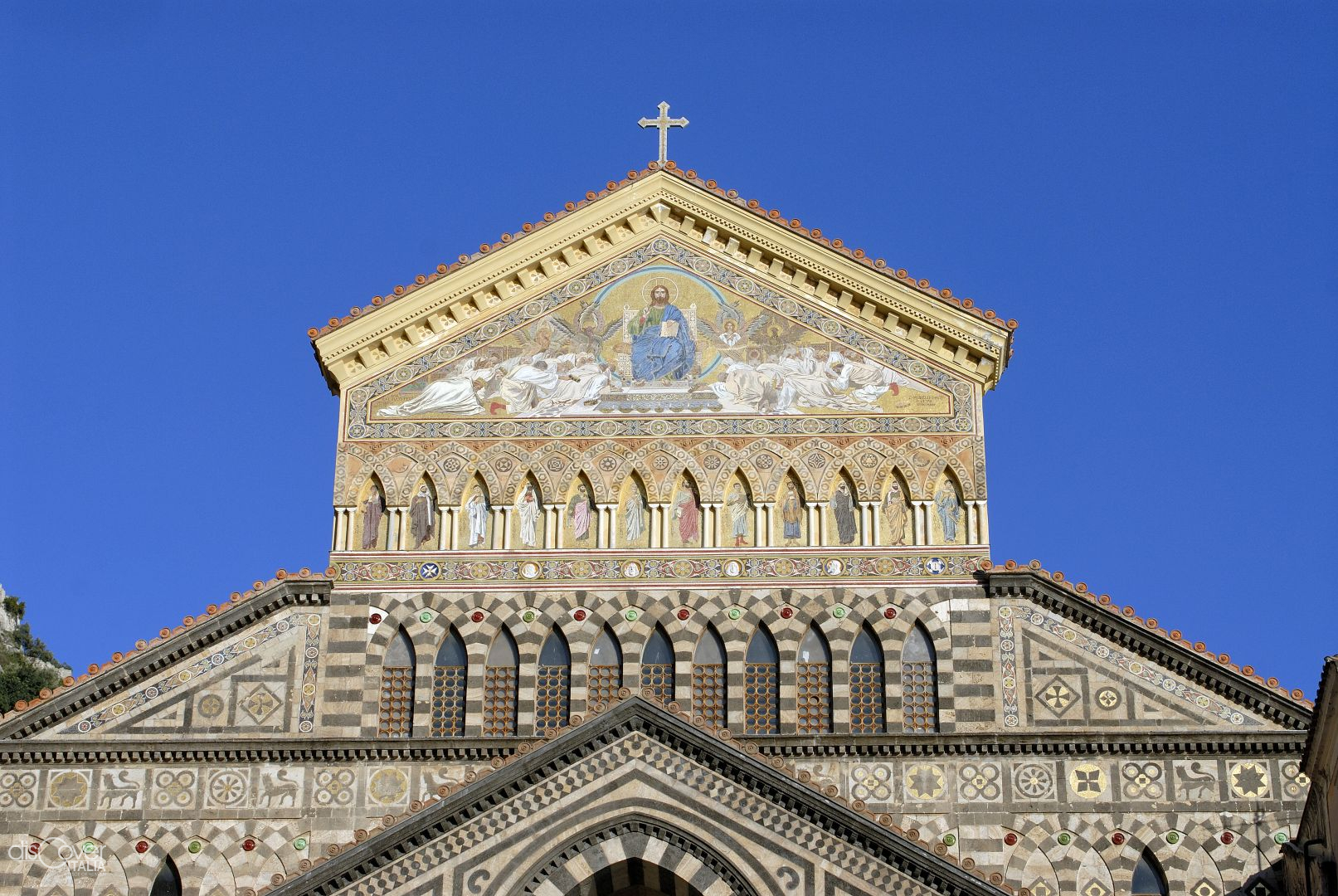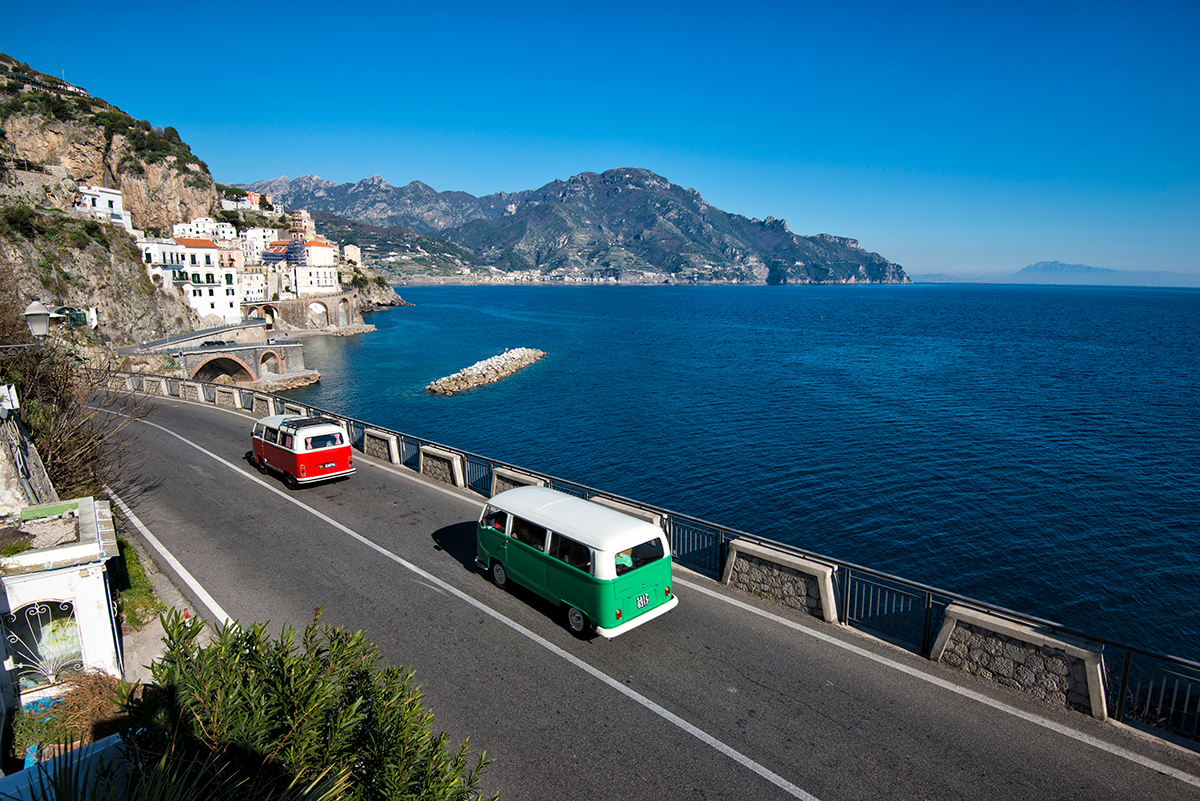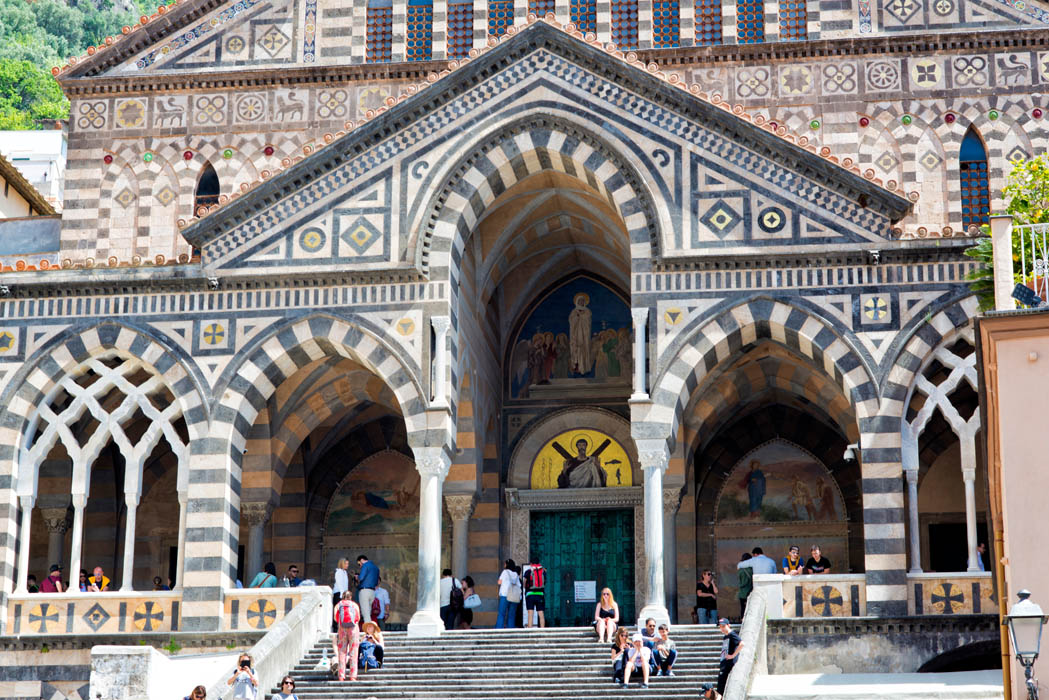The landscape of the Coast would not be the same without the domes of the churches shining in the sun with their bright colours.
And many alleys and stairways of the land of the Sirens would not emanate the same atmosphere without the decorations of majolica appearing here and there
 It was not part of the Republic and of the Duchy of Amalfi like the other pearls displayed along the coast, Vietri, but its artistic trace appears everywhere in the coastal territory of which, depending on whether you explore it starting from Salerno or Massa Lubrense, it represents the beginning or the end. In a more favorable position for the landing, in the vast Gulf on which it overlooks, than the nearby valley of Irno, too exposed to the North winds even during the good weather, it was on the stretch of sea marked by the mouth of the torrent Bonea which the Etruscans founded Marcina. Their commercial emporium further south, supporting the controlled territories in the interior. Which they left to the Samnites, when they had to withdraw from Southern Italy. For the same reasons which had determined the foundation, the Romans enhanced the port of what was then named as Urbs vetus, the ancient town which transformed the use of vernacular in Veteri in the Middle-Ages, when it entered the sphere of influence of the nearby Cava, the current Cava de’ Tirreni. The port, at that time located in the bay of Fuenti, was functional precisely to the trade of Cava with the settlements in the valley of Sele. And Vietri remained linked to the fate of Cava for centuries, until 1806, with the advent of the Napoleonids on the throne of Naples.
It was not part of the Republic and of the Duchy of Amalfi like the other pearls displayed along the coast, Vietri, but its artistic trace appears everywhere in the coastal territory of which, depending on whether you explore it starting from Salerno or Massa Lubrense, it represents the beginning or the end. In a more favorable position for the landing, in the vast Gulf on which it overlooks, than the nearby valley of Irno, too exposed to the North winds even during the good weather, it was on the stretch of sea marked by the mouth of the torrent Bonea which the Etruscans founded Marcina. Their commercial emporium further south, supporting the controlled territories in the interior. Which they left to the Samnites, when they had to withdraw from Southern Italy. For the same reasons which had determined the foundation, the Romans enhanced the port of what was then named as Urbs vetus, the ancient town which transformed the use of vernacular in Veteri in the Middle-Ages, when it entered the sphere of influence of the nearby Cava, the current Cava de’ Tirreni. The port, at that time located in the bay of Fuenti, was functional precisely to the trade of Cava with the settlements in the valley of Sele. And Vietri remained linked to the fate of Cava for centuries, until 1806, with the advent of the Napoleonids on the throne of Naples.
If in the ancient times, the main settlement, which is Marcina, was the closest to the sea, with Veteri the barycentre moved to the heights below mount San Liberatore, behind the Marina, where the maritime activities took place and where the scaria , the yards where purse seines and fishing boats from Vietri were built. And in the hilly historic centre, the dome of the bell tower of the church of San Giovanni Battista stands out, unique, dedicated to the patron saint. What identifies it is its covering of green, yellow and blue majolica. The dome of the bell tower is also majolica. And the painted majolica is the characteristic element outside and inside of the seventeenth-century edifice, in late Neapolitan Renaissance style. On the entrance gate, in fact, in the last century, a representation of the Saint painted on a ceramic was inserted. Inside, with a single nave, only one altar is decorated with marble inlays, all the others are embellished with ancient artistic majolica. The paintings are valuable, dating back to the Eighteenth-Nineteenth century: more particularly the polyptych of the Nursing Madonna (Madonna del Latte), with the Madonna feeding enthroned on a golden background nursing and, on the lateral panels, San Giovanni Battista and Sant’Andrea, and the altarpiece from 1732 by the local artist Pietro De Rosa depicting the Virgin with San Giovanni Battista and Santa Irene.
Always in the old town, the Archconfraternity of the Azzunziata and the Rosary dates back to the Seventeenth century, where the painted majolica is the protagonist on the facade and on the floor. All the decorations of the interior are also made of ceramic, with a Latin cross and a single nave, with a beautiful coffered ceiling in pure golden. The Seventeenth-century frescoes are valuable. Other sacred edifices worthing a visit are the church of Madonna degli Angeli, the parish church of the hamlet of Raito, the church of Santa Maria di Antiochia in the district of Benincasa and the church of Santa Margherita di Antiochia in Albori. On the road which connects Marina di Vietri to the rest of the Coast, near the beginning of the way leading to Raito, there is the church of Madonna dell’Arco.
The Marina, divided in two by the torrent Bonea, is the large beach of Vietri, with bathing establishments and a part open to the free use. There stands one of the many guard and defense towers built when the Saracens attacked continuously the hamlets along the coast during the good weather. The Dragonea Tower of the 12th century is remarkable. The other beach of Vietri is the Crespella or Crestarella one, which is in a magnificent position between the towers, particularly the one of Chiatamone, also known as Crestarella. The beach overlooks the panorama of the faraglioni called Due Fratelli.
In the months of 1944 when Salerno was the capital, in a delicate transitional phase from an institutional point of view for Italy, king Vittorio Emanuele III resided in Raito, in the Villa Guariglia which houses now the Provincial Museum of Ceramics.











Comments powered by CComment